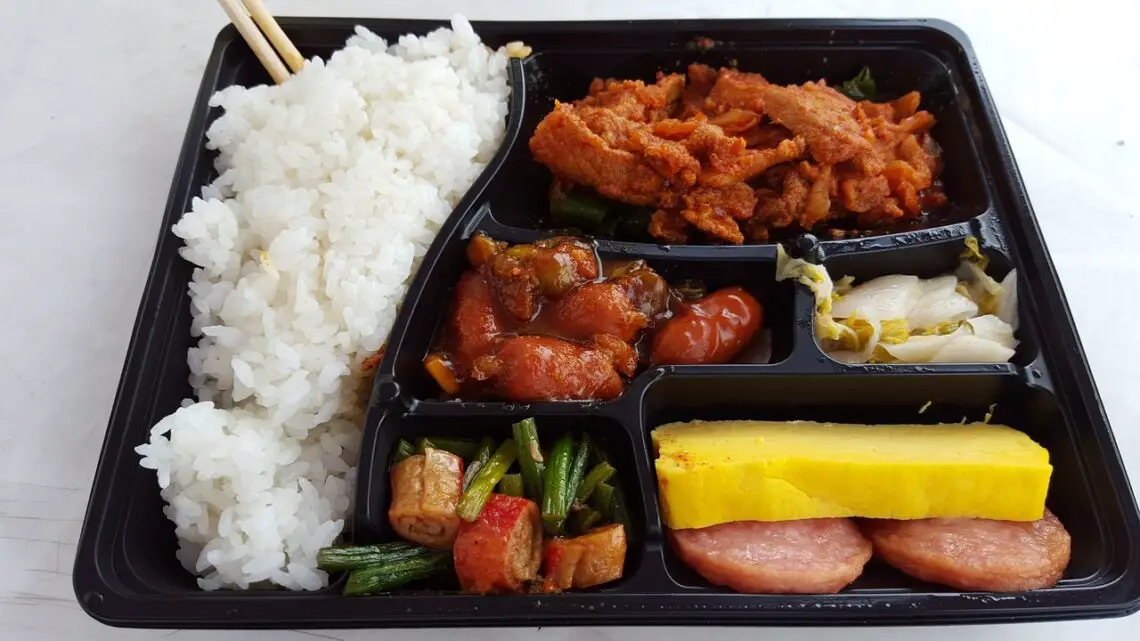
Japan’s Bento Box: A Complete Guide to the Japanese Lunch Box
Japanese cuisine is famous the world over. Whether it’s an exotic plate of sushi or a bowl of steaming ramen, these delicacies are very popular globally. But the Japanese Bento box is not that far behind. Bento boxes have a very rich history too. Well, we will be focusing more on them in this post.
A Bento Box is a boxed single serving of different food. It normally contains rice or noodles, meat or fish, and a wide variety of steamed veggies. The Bento box offers a convenient way to enjoy healthy, high energy, and tasty food on the go.

How Are Bento Boxes Used Today
Modern-day bento boxes are normally used by the working-class and school children in Japan. The boxes are seen as a healthier and cheaper alternative to the normal fast food takeout. They normally include healthy raw fish dishes like nigiri, sashimi, and other delicious dishes. Bento boxes are also very common during family picnics or day outs. In some cases, parents may also pack a box for school visits and sports days.
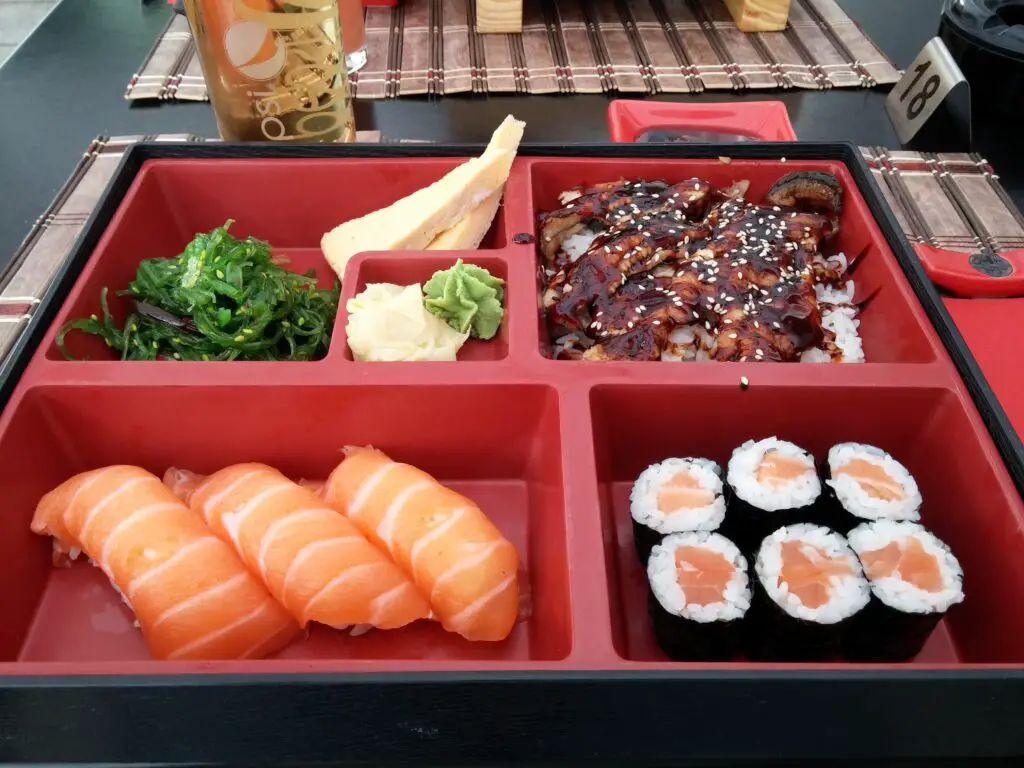
Bento Boxes as an Expression of Art and Affection
A lot of thought goes towards packing the bento box. Unlike what people assume, it’s not just about stuffing food in different compartments and hitting the road. Japanese families place a lot of emphasis on presentation. Bento boxes, especially when homemade, are often considered an expression of love. For instance, if a mom packs a bento box for her child, she would want to make it special. The same criteria also apply when a spouse packs the box for their working partner.

The amount of detail and thought in packing bento boxes is often reflected in popular Japanese chara-bens or “Character-Bentos”. They are a series of world-famous bento boxes designed to resemble characters in pop culture, animals, and plants. Decorated chara-bens are used to entice children to their food.
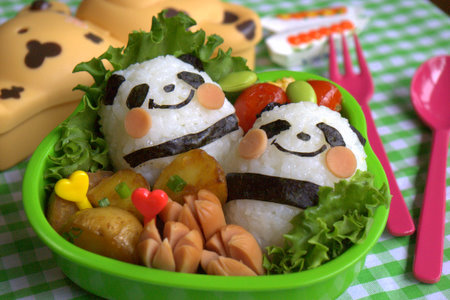
These beautifully presented boxes may also come with a heartwarming message. They are all about art and creativity. The practice of making chara-bens is now a proud Japanese tradition. There are even national chara-ben competitions held in the country each year. We will also discuss additional aesthetic bento boxes later in the post, including the unique Aisai Bento.
Types of Japanese Bento Boxes
Japanese bento boxes are available in different types. They are normally categorized based on their purpose. Here are some of the most commonly used bento boxes in the country:
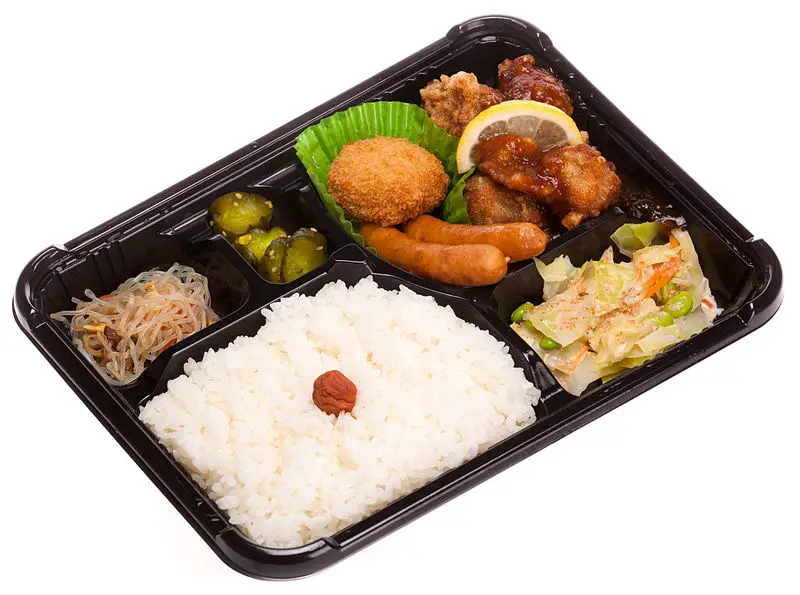
Makunouchi Bento
The Makunouchi Bento is normally packed with take-out food. The boxes are very common in convenience stores across Japan. They have two main sections. The first one is packed with rice, which is the largest serving. The other side is packed with an assortment of small dishes including veggies, fish, pickles, and others. The Bento also comes with a signature salted pickle palm locally known as “umeboshi”.

The Mukonouchi Bento is one of the oldest bento boxes in Japan. Its name is a combination of the words “Makuno” and “Uchi”. These terms loosely translate to “Between Acts”. The Mukonouchi Bento traces its origins from Japanese theater arts. Normally, it was served during intermissions as early as the 16th century. The box also birthed the railway bento, also known as the Ekiben. It is today one of the most popular and commonly used bento boxes in the country.
Aisai Bento
The Aisai Bento is a form of a romantic bento box, often prepared by a “loving wife”. As we have noted above, bento boxes can be used as an expression of affection. The Aisai Bento does that perfectly well. Mostly, it’s not the food in the box that matters but how it’s presented.

The Aisai Bento is prepared by a wife to her husband and her children. It tends to be visually appealing and may contain specific favorite treats for the family. What matters here is the expression of love and the unique presentation of the box’s contents.
Koraku Bento
The Koraku Bento translates to the “Picnic Bento”. The boxes are made for excursions and outdoor events. They are very popular during “Hanami”, Japan’s famous cherry blossom viewing. The Koraku Bento is relatively large compared to other boxes too.
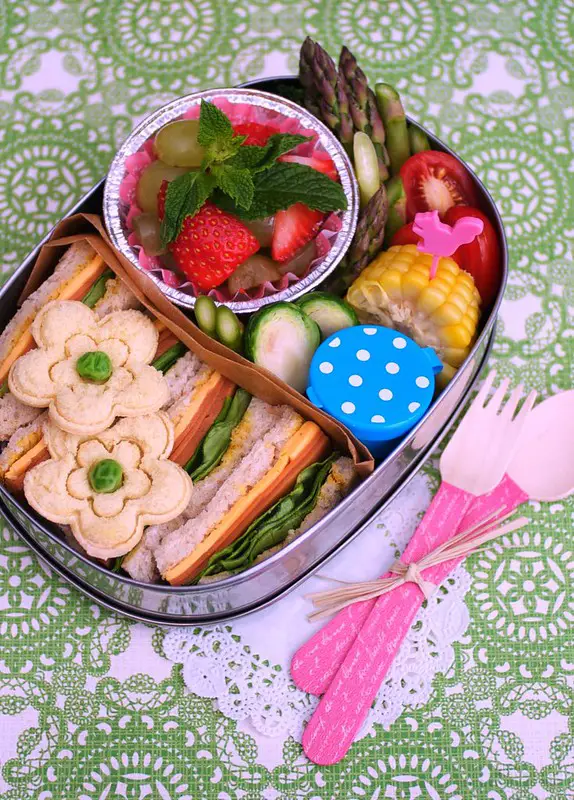
This is because it’s a family-based bento box. It must, therefore, carry enough food for everyone. Koraku Bentos may contain an array of foods, for example, “Onigiri”, local triangular rice balls, are very common.
Hinomaru Bento
The Hinomaru Bento is all about expressing loyalty and allegiance to the country. The term Hinomaru in fact translates to “Flag of Japan”. This bento box is therefore themed to look like the Japanese flag. It features a thick white base made of rice. The base is then topped with a salted red pickle to create the perfect replica of the Japanese flag.
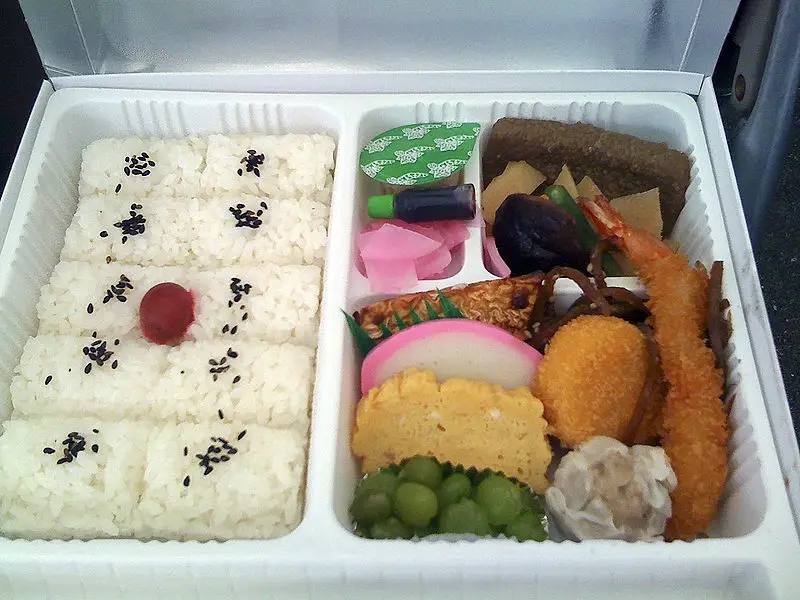
However, there are still additional delicious bites in there too. The Hinomaru Bento may include meat, fish, and vegetables. If you ever wanted to enjoy some patriotic food the next time you are in Japan, this would be it.
Chara-ben
We had touched on the Chara-ben above but it is worth reemphasizing. The Chara-ben is the expression of art and creativity in bento boxes. The boxes are packed with decorated food that may sometimes resemble popular TV characters. In some cases, chara-bens may also look like playful animals.

Initially, these boxes were often used to encourage children to eat more. But they are now an integral part of Japanese artistic bento boxes.
Ekiben
The Ekiben is a derivative of the Marukonouchi Bento. It started to gain steam in the early 1900s around Japanese railways. Ekiben is a combination of the words “Eki” and “Ben”. Eki stands for railway or train and Ben is the bento. It refers to a variety of bento boxes that are sold on train stations and train platforms.
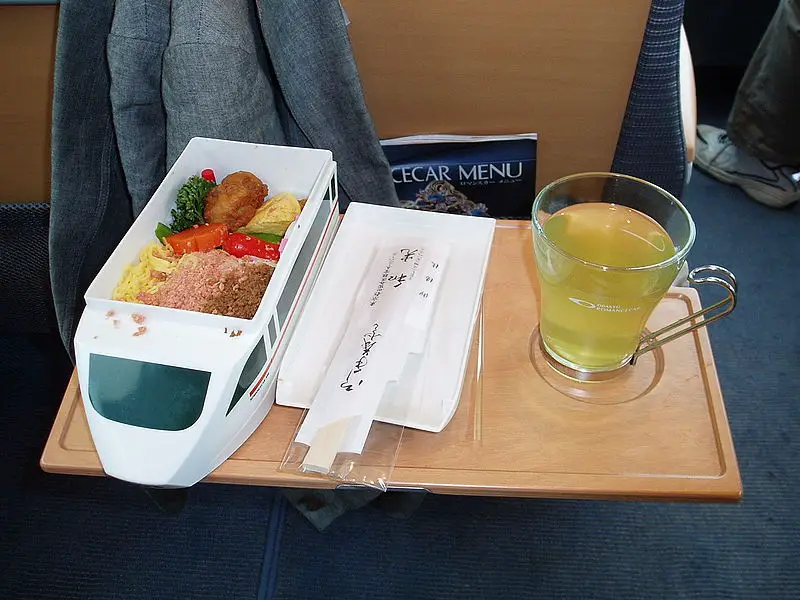
In the early days of the Ekiben, vendors would hawk the boxes with their own hands to subway users. However, the popularity of the boxes grew in strength. Eventually, fully-fledged shops, conveniently located on subway stations, were established. The shops are present even today and continue to provide healthy Ekiben in major Japanese cities.
Weird Bento Boxes in Japan
Despite the incredible variety of bento boxes available in Japan, there are a few weird exceptions. Shikaeshi-ben is one of them. Remember we discussed the Aisai Bento above, which is prepared by a loving wife. Think of the Shikaeshi-ben as the exact opposite. Maybe you’ve been a bad boy or perhaps you are not in good terms with your spouse. Either way, you are getting a Shikaeshi-ben. And trust me, it’s nowhere near the warmth and affection of the Aisai Bento.

The Shikaeshi-ben loosely translates to the revenge bento. It can include a lot of things. In some cases, you may get an empty lunch box with nothing but uncooked rice or corn. Some wives even go as far as writing a curse word in there. Whatever the case, you are going to feel her anger. The Shikaeshi-ben is, however, not just limited to wives only. Even husbands or boyfriends can send a revenge bento box if they want
The Origins of the Bento Box
The first Japanese bento box was developed in the 13th century. During this period, Japanese peasant farmers had learned how to dry cooked rice, often referred to as “Hoshi-ii”. They however needed a way to carry the food to eat later. At first, cooked dried rice was stored in small bags and carried around. But this was not convenient enough.

Eventually, the farmers developed lacquered wooden boxes that would form the very first design of the bento box. The wooden lacquered boxes remained the same for the best part of the 14th and 15th centuries.
The 16th Century through to the 18th Century
In the 16th century, the bento box was refined a little bit to include woven bamboo leaves. This was done purposefully so that the box could easily hang around the waist. It meant that travelers and sightseers in the country could conveniently move around with their foods neatly attached to their bodies. In the 17th and 18th centuries, bento boxes were appearing in Japanese dance and drama shows too. The shows are locally known as “Noh” or “Kabuki”. People brought their boxes at the theater and would later eat their packed food during intermission or in between acts.
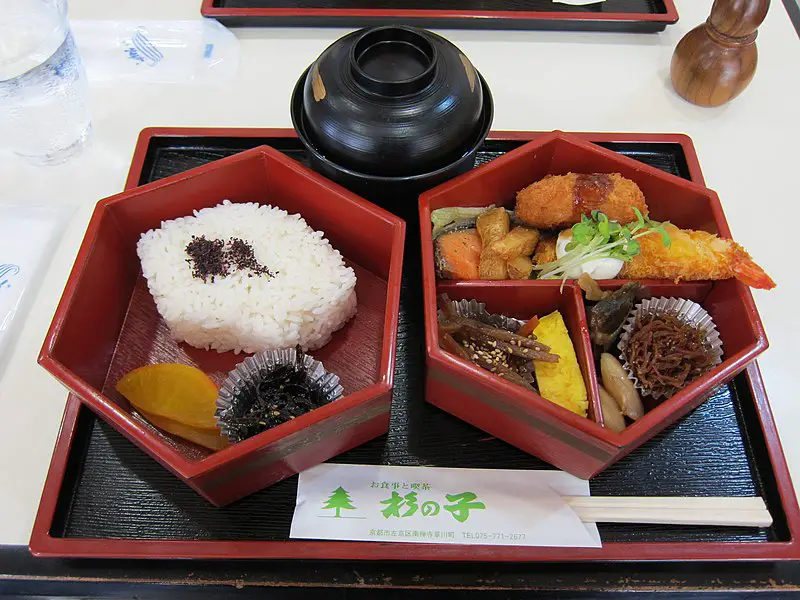
It was during this period where the Makunouchi Bento was born. The Makunouchi Bento is still the most popular bento box in Japan to this day. Japan also saw a surge in cookbooks dedicated to the bento box in the mid-18th century. The books provided details on how to cook for the bento box and how to pack the food for various occasions.
The 19th Century and the Rise of the “Ekiben”
By the turn of the 19th century, bento boxes were fully entrenched in Japanese culinary culture. It was in fact during the 19th century when the first train station bento came to existence. Train station bento boxes, locally known as “Ekiben”, were extremely significant. They somewhat helped to popularize the bento box globally.

Vendors selling packed bento boxes sprouted in train stations around Japan in the 1900s, and they are still there to this date. For example, you can easily get a packed bento box for less than 1000 Yen in Tokyo’s subway stations anytime. It was also during the 19th century where children and teachers started carrying bento boxes to school.
Where to Get the Best Bento Boxes in Japan
Bento boxes are part and parcel of Japanese cuisine. So, plenty of places to buy them exist in the country. There are two types of bento box customers. The first category covers on-the-go buyers. These are people who want to grab a balanced quick bite and wouldn’t mind a packed bento box. The second bunch of people is those who prefer a homemade bento. In essence, you want a box that you can pack yourself and take it with you to work or school. So, let’s start with the first category.

Buying Bento Lunches on the Go
There are two popular places to buy bento lunch boxes on the go. They include the train station and convenience stores
Train Station Bento Boxes (Ekiben)
The Ekiben, as we have noted above, is one of the most popular bento boxes in Japan. These tasty delightful lunches are served by vendors on train platforms and stations. The Tokyo subway in particular has an amazing variety of Ekiben. If you happen to be in the city, be sure to stop by the Tokyo Main Railway Station.
You will enjoy some amazing bento there, including the popular Beef Domanaka that goes for around 1250 JPY. The bento features a serving of sliced beef dipped in a special sauce. It is topped with some freshly steamed vegetables and finished in tasty fluffy Domanaka rice, sourced directly from Yamagata. The box is sold at the Ekibenya Matsuri, one of the most popular bento shops at the Tokyo Station.
However, in case you want something a little bit authentic, try out the Densho Aji no Oshi-zushi. The bento has been served the same way at the Tokyo Station since 1913. It offers a tasty mackerel fillet dipped in traditional Japanese vinegar and some rice as well.
Train Station Bento in Other Cities
Other major cities in Japan also offer some tasty railway bento boxes too. If you are in Osaka, Eki Marche, located at the Shin-Osaka Station, is highly recommended. Eki Marche is a complex of souvenir shops and restaurants conveniently located on the railway station. The complex has several Ekiben restaurants, including some that specialize in bento boxes from across Japan. You will also find restaurants that focus solely on Osaka inspired bento boxes. Either way, you will enjoy the experience.
As for folks passing by Kyoto via train, the Kintetsu Kyoto Station also has some savory treats for you. The bento boxes are mostly sold inside the Asty Square, a modern state of the art mall located on the station. You will get a great variety to sample there.
Although railway station bento boxes are often associated with busy working-class citizens, they are also a favorite for tourists. There is no better way to see Japan than through the railway. Train station bento boxes are normally served for long-distance train travel. They are designed to showcase the local cuisine. As such, you are going to come across specialized bento boxes specific to the particular train station you are traveling in.
Convenience Store Bento
A lot of convenience stores in major Japanese cities sell bento boxes too. However, we recommend any 7-Eleven locations near you. It’s understandable if you don’t associate convenience store food with superior taste and delicacy. But Japanese 7-Eleven locations have stepped up as far as the bento goes.
Besides, you get the chance to enjoy a great variety of bento boxes too. Convenience store bento boxes are also cheap. For example, try out the Salmon and Spicy Cod Roe on Rice Bento in any Tokyo 7-Eleven for less than 500 JPY. 7-Elevens are located almost everywhere in Japan.
Bentos for Homemade Lunches
So, let’s say you prefer to pack your lunch inside your bento box. Well, you will be happy to know that there are several places to buy quality bento boxes and accessories. Here are some of them;
100 Yen Shops (Hyaku-en Shoppu)
For those of you looking for cheap bento boxes for everyday use, popping into any 100 Yen Shop is advised. These shops carry a variety of bento boxes. However, even though they are dubbed the 100 Yen shop, it doesn’t mean everything is 100 Yen. Most of the bento boxes in these locations sell for more. They can go as high as 300 Yen, but it’s still cheap.
100 Yen Shops are located in shopping malls. There are several chains in Japan too including Daiso, Seria, Can Do, and others. In case you are in Tokyo, be sure to step into The Daiso Diver City. The store plaza is located at the heart of the Japanese capital and would have an array of bento boxes to buy. Daiso also has locations in Kyoto, Osaka, and other major cities in Japan.
Specialty Household Goods Stores
You may also get top quality bento boxes in some of the leading specialty household goods stores in Japan. The great thing about specialty stores is that they offer an excellent variety of bento boxes, including higher-end, more expensive options. Of course, many of these stores exist around the country. But we recommend LOFT Japan.
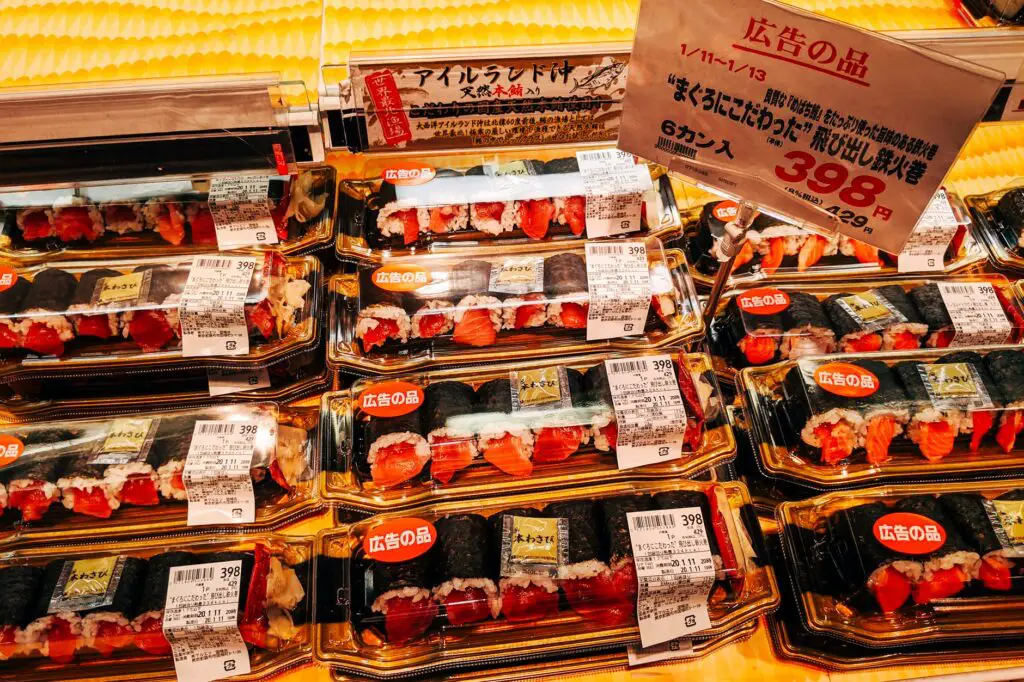
The specialty store is known for its innovative and amazing variety of household goods. You are likely to get a great selection of bento boxes there. LOFT has over 117 locations around Japan, mostly located in major cities. For those of you in the Tokyo Metro, you can buy quality bento boxes at Shibuya Loft in the city.
Overall, the average cost of bento boxes in the store will range between 1000 Yen and 5000 Yen. The price largely depends on the size of the box, the material it’s made off, and its design. Some wooden boxes, available at Loft, may cost way more than 5000 Yen so be aware of that. You will also get boxes for both children and adults.
Luxurious and Expensive Bento Boxes
For the most part during this article, we have told you that bento boxes are considered a cheaper and healthier alternative by most Japanese people. But how about spending $1000 or more on a bento box? Well, it’s very much possible. Luxury Bento boxers that cost enormous amounts of money are very common in Japan. Here are some that we managed to find:
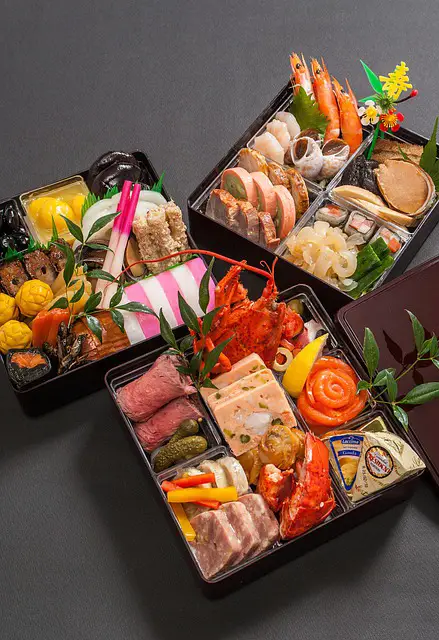
Nikko Buried Treasure Bento
This Bento was covered on BuzzFeed for its outrageous price. It cost around 180, 000 JPY, or around $1600. The Bento is loaded with several delicacies, including perfectly cooked prime beef fillet. You also get some tofu skin, caviar, and a signature Masuzushi from the chef. The bento also offers an array of desserts to choose from including a delicious sunflower cake.

Tottori Wagyu Complete Cow Bento
In case you are a passionate meat lover, this stunning Wagyu beef bento box will tickle your fancy. That is of course if you are willing to pay the $2600 price tag for it. The reason why the bento is very expensive is that it serves up to nine pounds of exclusive Wagyu beef. The meat is packed in a 33-pound bento box with compartments designed to look like a real cow. If you want the ultimate Japanese beef experience, the Tottori Wagyu Complete Cow bento is highly advised.

18K Gold-Plated Takashimaya Osechi Bento
For something even more outrageous, look no further than this 18 K gold plated bento from Takashimaya, a successful department store in Japan, famed for its stunning twists on traditional Japanese New Year food or Osechi.
The department store marked 180 years of its existence by serving customers in this 18 K gold plated bento, valued at around $200, 000.
Although this bento was a one-time piece, it is probably one of the most expensive boxes ever made.
How to Pack a Bento Box
Now that you have purchased a bento box, you may want to learn how to pack it. There are a few steps you can follow and here are some of them:
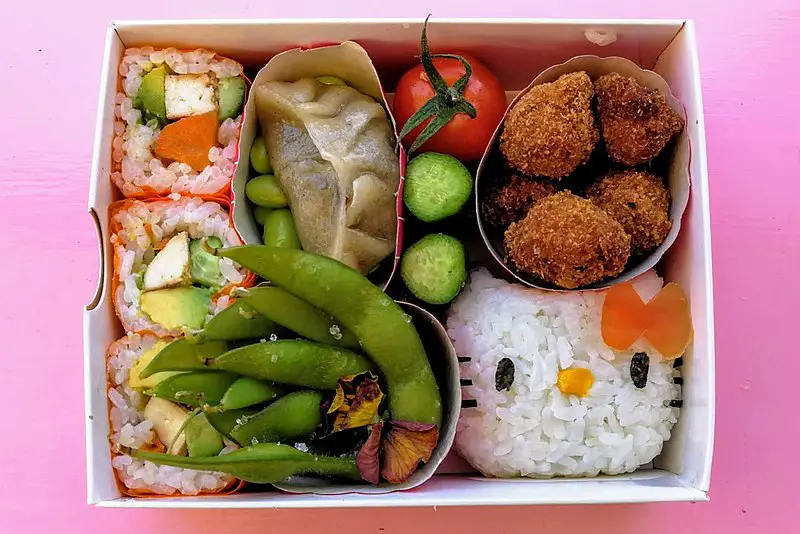
Know the Size
You must decide how much food you want to carry. This will help you pick an appropriately sized box. The last thing you want is to try and cram food in a small box. Remember bento boxes are also about presentation. You will not be able to present your delicious meals well if there isn’t enough space in the box.
Determine the Layout Based On What You Are Cooking
Traditionally, the bento box is dominated by a single serving of rice and then topped with small pieces of meat, fish, and veggies. This, therefore, means that the rice will take most of the space in your box. Nonetheless, even if you are not cooking rice, you still want to create a layout first before packing. Just sit down with a pen and plan out the bento box before stuffing it with food.
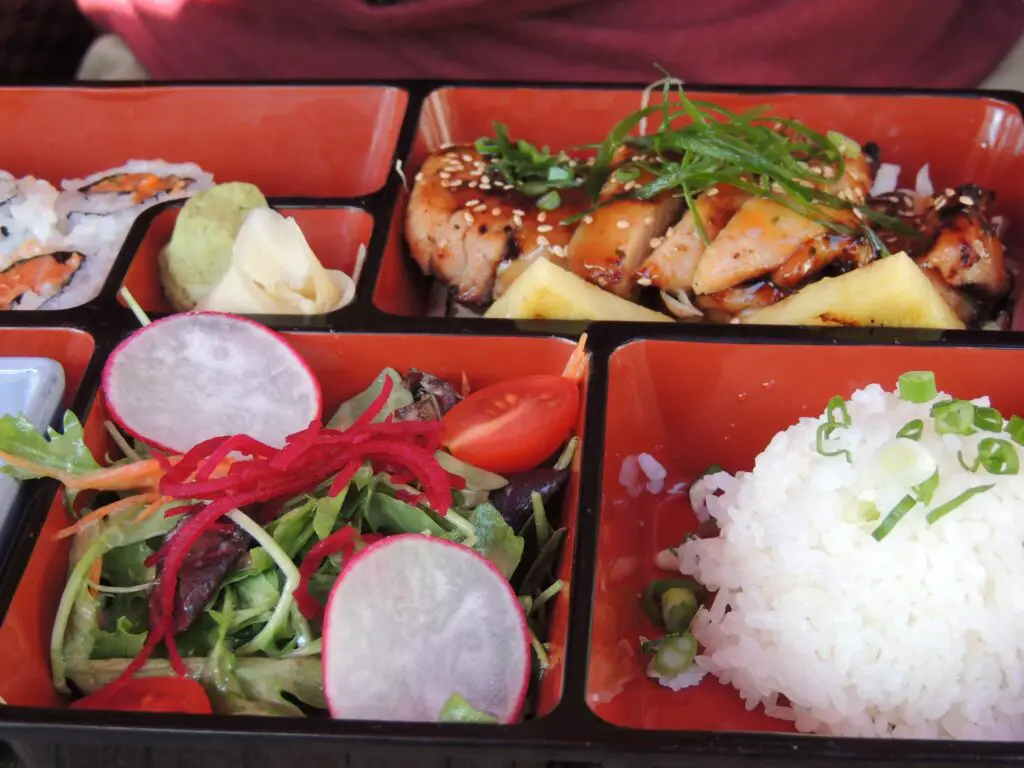
Make Sure the Foods Don’t Touch
There is a reason why bento boxes have compartments. The food is not supposed to touch each other or the flavor may be affected. If you don’t have a pre-divided bento box, you can buy simple dividers and use them to create various compartments. Be sure to use sauce cups as well to prevent any fluids from spilling all over the food.
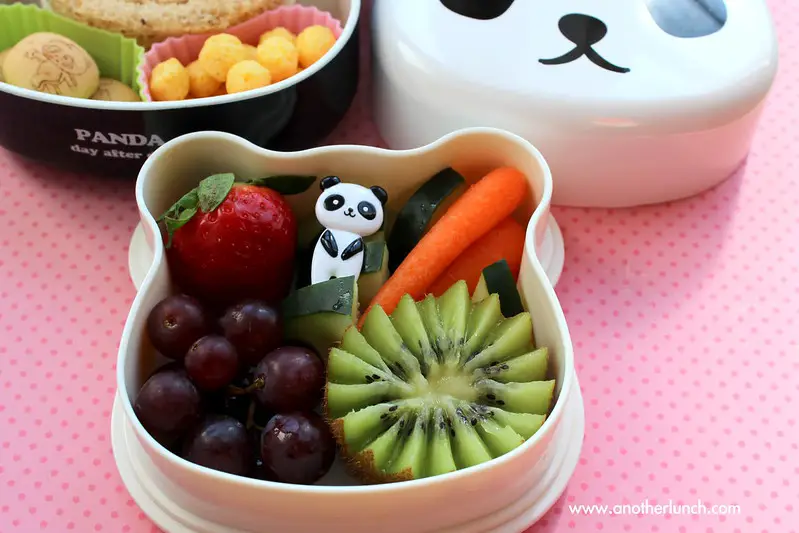
Interesting Bento Box Controversy
In the early 1900s, the bento box had evolved to become a luxury item. Bento boxes were no longer the wooden boxes associated with peasant farmers. They were now made from shiny aluminum for extra opulence. After the First World War, Japan experienced massive economic inequality. The country had managed to expand its industries and manufacturing. But there was still a significant population of farmers who had to contend with unstable crops.
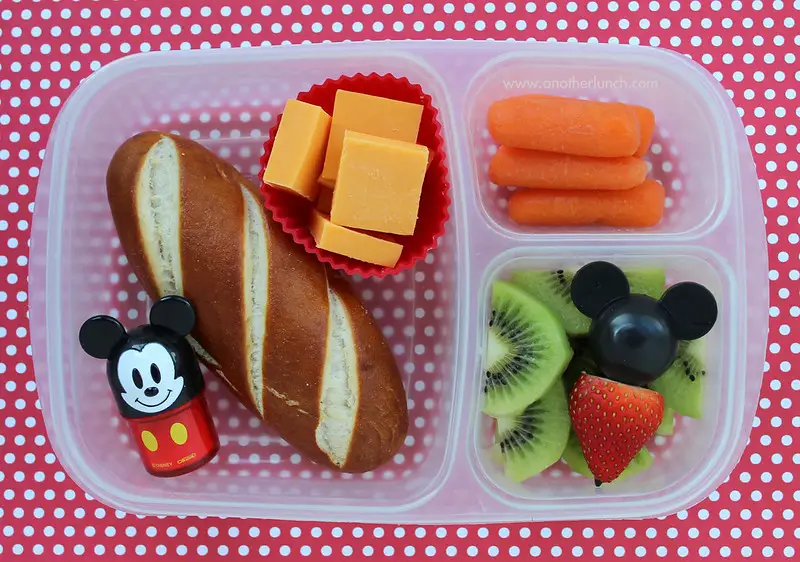
This meant that one part of Japanese society enjoyed extreme wealth while the other wallowed in poverty. The distinction in economic status was reflected in bento boxes, especially among school-going children. Rich kids from well to do families often carried large and shiny aluminum bento boxes to school. The boxes were also packed with nutritious and healthy food. Children from poor families on the other hand could not afford the bento box. Even when they did afford it, it was nowhere near the prestige of the shiny aluminum boxes associated with rich children.
How the Bento Box Became a Social Justice Issue
It is believed that the difference in the quality of bento boxes had massive psychological effects. This Impact was mostly felt by kids from poor families. Soon, the idea of the bento box became a social justice issue. The box was seen as a reflection of the deep-rooted economic inequalities in Japan at the time. As a result, it was an extremely controversial item.
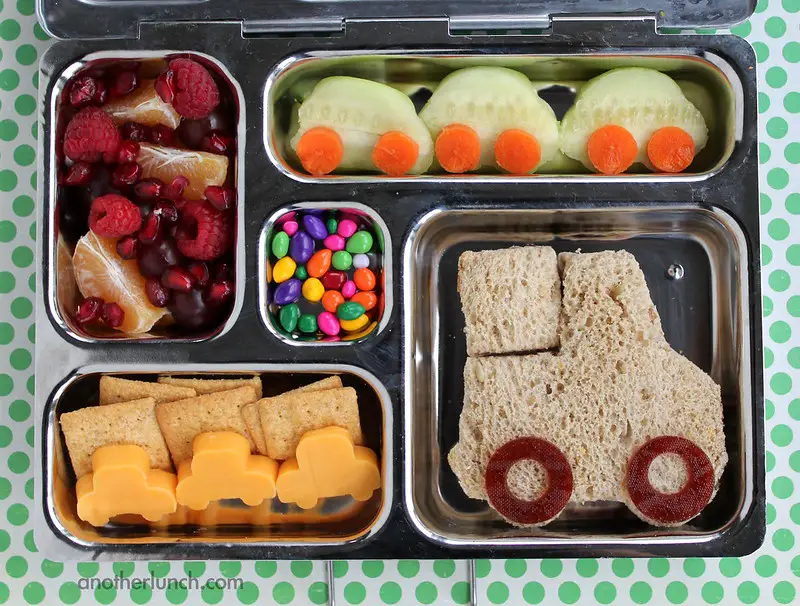
The Japanese government, therefore, decided to standardize lunches in all schools. Instead of carrying a bento box, children would now eat school-provided meals. During this period, the popularity of the bento box significantly declined in Japan. This continued all through the 19th century even after the Second World War. But it started to make a comeback in the 1980s.




